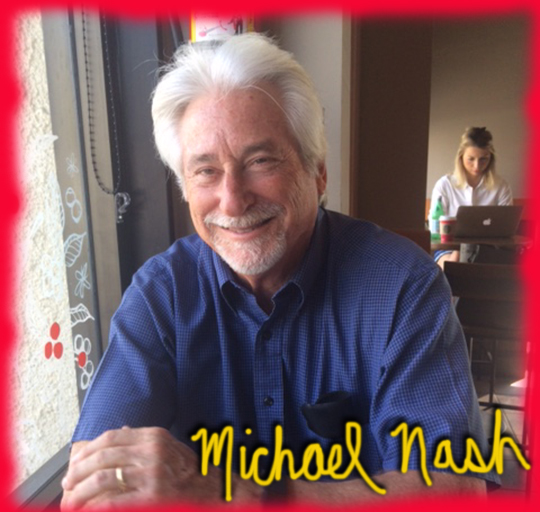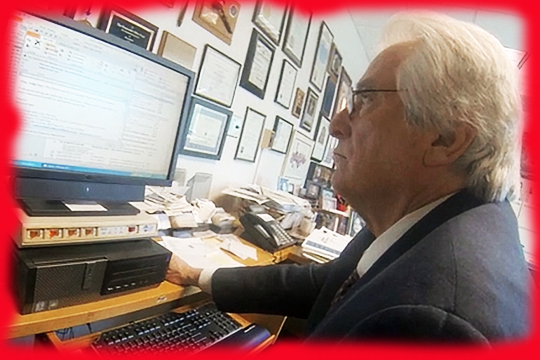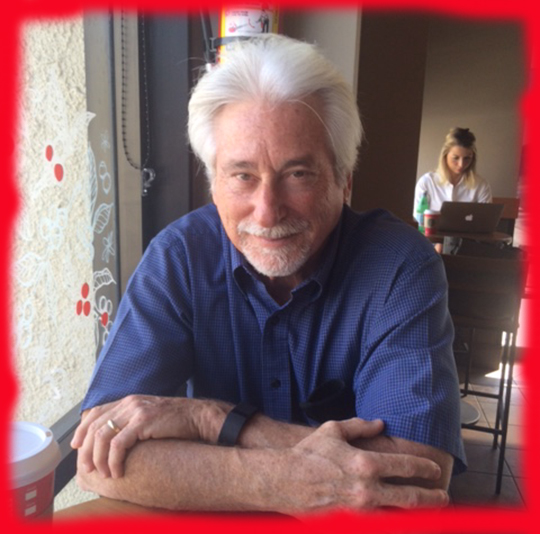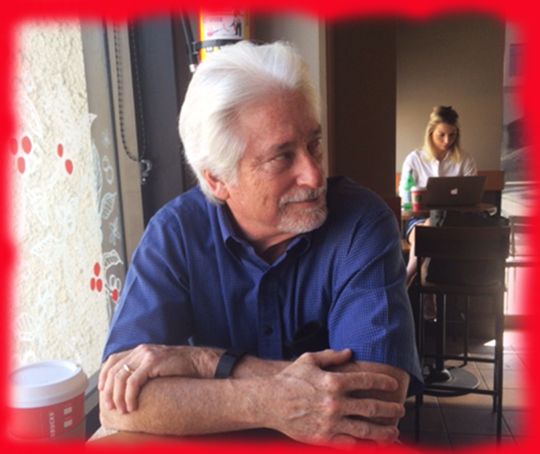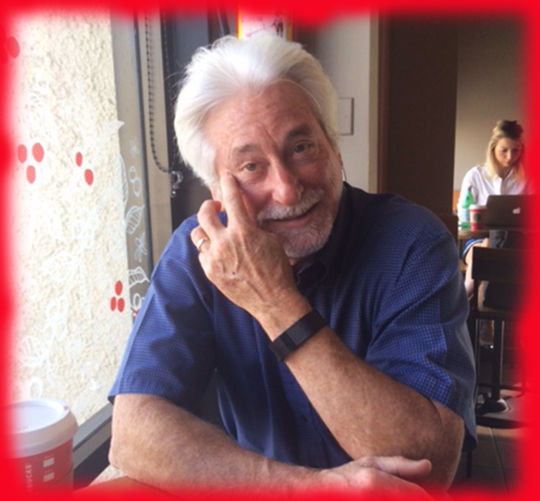LA’S FAMOUSLY REFORM-MINDED JUVENILE JUDGE TAKES ON FOSTER CARE
But was he given enough authority to get the job done?
by Gary Cohn
Michael Nash’s 30-year career as a jurist has mostly been focused on trying to make life better for Los Angeles County’s children. He is widely credited by lawyers, child advocates and other judges as having measurably improved the juvenile courts in Los Angeles, where he spent two decades serving alternately as the presiding judge of the Los Angeles Juvenile Court and supervising judge of the Juvenile Dependency Court.
The latter oversees the fate of Los Angeles foster children.
California’s massive foster care system is the largest in the nation, with 62,097 in foster care as of 2014. (To give you a reference point, New York, which has the next largest system, has 25,397). With 20,651 kids in care, sprawling and complicated Los Angeles County has 30 percent of the state’s foster youth, making it the largest municipal system in the United States, and — after 18 different directors have cycled through LA’s agency in 26 years — it is arguably America’s most chronically troubled.
Therefore, it is perhaps not surprising that, during his years on the bench, many of Mike Nash’s efforts and accomplishments have been focused on LA’s foster children:
He promoted major advances in treating crossover youth, kids who have contact with both the child welfare and juvenile justice systems. (Los Angeles County is also home to the nation’s largest juvenile justice system.)
To this end, Nash oversaw the creation of Los Angeles’ first juvenile mental health court and first juvenile drug court. In 1998, he helped launch Adoption Saturday in Los Angeles. Since then, about 10,000 foster children have had their adoptions completed in Saturday court hearings. And, in 2014, he managed to open the notoriously secretive Child Dependency Courts to the press.
Now at age 67, the reform-minded Nash is about to embark on a new challenge relating to LA’s foster kids: Early next year, he will become the first director of Los Angeles County’s new Office of Child Protection.
The job was created by the LA County Board of Supervisors at the recommendation of a blue-ribbon commission empaneled by the supervisors in the wake of the horrific killing of 8-year-old Gabriel Fernandez. The boy had been seen multiple times by foster care workers and county sheriff’s deputies before he was essentially tortured to death by his mother and her boyfriend.
After its formation, the commission declared the county’s foster care system to be in a state of emergency requiring a fundamental transformation of the current child protection system.
First on its laundry list of changes urgently needed, the commission recommended that a new entity, the Office of Child Protection, be created to ensure an integrated approach to child protection.
“It is critical that one entity be responsible and accountable for the well-being of the child as a whole and that this entity have no other competing responsibilities,” the commission wrote.
As the OCP’s first director, this means that Nash will, in effect, be in charge of finding a way to make sure the county’s neglected and abused children are kept safe.
Gary Cohn talked to Nash about the priorities and challenges of his new job.
THE NATURE OF THE TASK
Gary Cohn: First of all, just to set the stage, would you describe your new position and why you accepted such a huge, and some say, impossible job? You were, after all, retired for not quite a year.
Michael Nash: This is potentially an opportunity to see if we can improve the way our system here in Los Angeles works with kids and families. It’s a big challenge because it’s a new entity. How it works is not that clearly defined at this point in time.
Cohn: At one point, your new job was known unofficially as “child welfare czar,” with the ability to affect budgets and hire personnel, but the job description changed, and now it doesn’t include anywhere near as much authority. How big an obstacle does that present?
Nash: There’s no authority, OK? The mission is so large that it’s not that clearly defined. So, on the one hand, I expect I will be advising the Board of Supervisors. On the other hand. I expect that I’ll have an opportunity to bring folks together and work on specific issues and see if we can improve how things function. Because there’s no specific authority it’s like walking a tightrope in a way, a real balancing act.
Cohn: Without that specific authority, what you can accomplish is sort of up to your persuasiveness?
Nash: That’s the uniqueness of the challenge and quite frankly I’m crazy enough where that appeals to me.
Cohn: The Board of Supervisors has set certain priorities for your position, putting a big emphasis on prevention, increased transparency in the system and creating a strategic, child-centered plan that is data driven, informed by best practices and that connects all agencies in the county and sets forth measureable goals. But the main emphasis is on keeping children safe. How do you do that?
Nash: We assess the risk that children face in given situations. That’s still an issue and how we coordinate the actions of not only, the Department of Children and Family Services, but other entities — whether it’s law enforcement, the education system, or the health system. We really have to figure out what piece each of those entities own, and how to better coordinate their efforts so that kids don’t fall through the cracks and end up dead.
TO REMOVE OR NOT TO REMOVE
Cohn: How do you strike the proper balance in deciding whether to keep kids in their homes or pull them out?
Nash: You want to have an assessment tool in place that is properly utilized by the different folks that touch these families. At the end of the day, we can’t guarantee that nobody is going to get hurt, but certainly with a good tool, with proper training, proper oversight, proper evaluation, I think we can do a better job of minimizing the risk.
Nothing in life is absolute, but when we see these situations come up again and again, you go, “Hey, is there a better way to do things?” I think that’s why the blue-ribbon commission was formed in the first place, because you had a child who died, a child that the system had touched, that different entities had touched, and the child ended up dead. So that’s an issue that the Office of Child Protection ought to be addressing.
Cohn: You’ve been pretty outspoken about efforts to try and keep families together?
Nash: The law requires that we make every effort to keep families together if we can do so safely — key word being safely. So, it’s about striking that balance. How do we do that, OK? Some people say, “Well, when we keep families together, we ignore safety.” Other folks say we don’t make the appropriate efforts to keep [families] together, we just remove the kids.
Again, it’s about choosing the appropriate balance. There are kids who need to be removed and there are kids who could stay home if the appropriate services were offered. In court, whenever we remove a kid, the question we should be asking before we do that is: Are there any services that would allow this child to safely remain home?
We have to ask that question in every single case and get a good answer. Now in many of the cases, the answer is easy. What’s going on [in the home] is just so awful that you can’t keep the kid there. But there are lots of cases that fall within a grey area, and we really need to give those cases the appropriate consideration. That’s specifically what the law requires, both federal law and state law.
At the end of the day I don’t know if we’ve ever achieved the appropriate balance. That has been an ongoing issue in child protection everywhere, not just here in Los Angeles.
Cohn: I understand that Los Angeles, as well as other jurisdictions across the country, is increasingly using child protective analytics to help make decisions about the best interests of children — when to leave them in their homes and when to remove them. Can you explain how you plan to use analytics moving forward?
Nash: Analytics is basically the use of data to predict future actions. When we talk about protective analytics in the realm of child welfare, [we are asking if you] can look at the data that exists and predict whether or not the risk to this child is great. You can use it in a lot of different ways. One is to inform the decision of social workers to remove or not to remove. I was just on a call yesterday where Wisconsin is trying to determine when families leave the system, what families are at risk of coming back into the system. They call that re-entry.
Wisconsin has a project where they’re using analytics to determine that. It’s relatively new so they don’t have any data yet to say whether it works. Other jurisdictions around the country are using analytics similar to the way we want to use it here. But, once again, it’s pretty new and so at least from the five or six jurisdictions that I heard from yesterday, they really don’t have any meaningful data yet as to whether or not it works.
Cohn: The idea of using it here would be to help make decisions of what kind of risks the child is facing and whether they are enough to necessitate removing them from the home?
Nash: Yes and DCFS [Department of Children and Family Services] is currently is working on a tool using analytics. I expect in the near future I’ll be briefed on that, and then determine to what extent the Office of Child Protection needs to be involved in that process.
BORROWING GOOD IDEAS
Cohn: There’s been a lot of talk about the increasing number of kids going into the foster care system, and the problems with recruiting adequate foster families lately…
Nash: Apparently it’s a problem, yes.
Cohn: Is that something you’ll be working on?
Nash: Well it’s something that was a recommendation from the Blue Ribbon Commission’s report so … once again, I’m in the process of doing my due diligence to find out where actually LA County is in this process, and to what extent can the Office of Child Protection be involved in that particular issue.
I’ll be spending my time this next month, and surely the beginning stages of my term, looking at a lot of different data, a lot of different processes to see where we need to go from here. Of course there’s nothing that will occur without the approval of the board. I’m not an independent entity in this regard. I work with the Board of Supervisors, so any thoughts that I have will be vetted with them and then we’ll move from there.
Cohn: Are there other municipalities that you look to because they’re doing things that you admire?
Nash: Well the good thing is, in my previous job I did a lot of national work, and so I know folks all over the country. One of the things that we’ve always done is steal from each other, when there’s something that somebody else is doing well. For example, here in Los Angeles back in the late ‘90s, we developed an adoption project which led to the Adoption Saturday program, which was very popular. Other jurisdictions around the country saw how popular it was, and they started doing the same thing.
We now have National Adoption Day where, on one day, every state in the union that has jurisdictions that can complete adoptions of kids from foster care, to the tune of thousands of adoptions, and it’s pretty cool. So that’s something we started that others have copied. By the same token, there are things we’ve copied from others. For example, when I was with the court, we had another program where we celebrated reunification. I wish it was my idea, but I stole it from a friend in Des Moines, Iowa.
Cohn: Can you explain how it works?
Nash: We had a date where we celebrated the families that reunified, which is just as important as adoptions, if not more important. What we want to do in the child welfare system is make sure that kids leave the system through families. Our number one preference is they leave the system in their own family. If we can’t do that, then the next priority is adoption.
Cohn: Are there additional programs and protocols that other jurisdictions are using that you admire and are thinking of bringing to Los Angeles?
Nash: I want to know what tools others are using on risk assessment. Is there something out there that we need to look at that perhaps we can adopt for our use here?
Another big issue that everybody is talking about is the trauma-informed system. Every child who comes into our system has suffered trauma. Every one. One hundred percent. They’ve been injured by someone close to them, then simply by coming into the system they’re traumatized.
And we know that trauma affects the bodies, the minds and the spirits of children. It prevents them from developing to their full potential. So everybody recognizes that we need to treat that problem. It certainly is being talked about here in Los Angeles. So the question is how do we assess the trauma when we bring these kids into the system. And how do we treat it? Are there jurisdictions that are doing that successfully, and achieving positive outcomes for kids? That’s something else that we’ll be looking at.
Cohn: You sound excited to jump back into it. Maybe “excited” is the wrong word…
Nash: You know, it’s probably as good a word as any. I’ve always been passionate about this work.
CROSSOVER KIDS, GROUP HOMES & OTHER HIGH PRIORITIES
Cohn: What about the particular problems of crossover youth — children who are in both the child protective and juvenile justice systems?
Nash: It’s an important issue because every child who is a victim of abuse and neglect is at high risk of crossing over into the juvenile justice system, and frequently they do. The question is how you create communication and coordination between the two systems so that somehow you can achieve a decent outcome for those kids.
We know that kids who come into the child welfare system are at risk of crossing over. And we also know that the child welfare side has never been operating on full cylinders, right? There are lots of issues with the system that probably contribute to them crossing over. We not only have a legal obligation to give these kids attention, we have a moral obligation to them.
We’ve done a pretty good job of bringing the two systems together in Los Angeles. Our challenge was, and still is, to figure out the best way to serve these kids.
Cohn: There’ve been a number of troubling stories in the media about two DCFS entities called the Youth Welcome Center and the Child Welcome Center. Can you explain to our readers what purpose those centers serve, and what our concerns ought to be?
Nash: We used to have a place called MacLaren Children’s Center, a shelter in El Monte that was designed to be a short-term shelter where we placed kids. Sadly, over the years it developed into a long-term placement for hard-to-place kids without appropriate services attached to it. It became a dumping ground for kids, and a dumping ground for social workers. It closed in 2003. The problem is that the system has not come up with a better alternative. For a while, the numbers of kids in the system were going down, but in the last five years the numbers have gone up significantly.
So where do we put these kids? There aren’t enough short-term foster homes or long-term foster homes, for that matter, and [while waiting for placement] kids were spending nights or days at DCFS offices. As a response, the county developed these “welcome centers,” which are really nothing more than a stopgap measure. There needs to be a better long-term solution — that includes, of course, recruitment of emergency foster homes, but I don’t know if that, in itself, is the answer.
Cohn: California passed legislation this year that is intended to comprehensively reform placement and treatment options for children in foster care. The legislation, AB 403, signed into law in September, is supposed to make sure that youth in foster care have their physical, emotional and mental health needs met and ensure they grow up in permanent and supportive homes. Are you optimistic about this legislation?
Nash: It could completely transform the way the systems work. It’s actually exciting. It’s going to be very difficult for the state and the counties to implement it in the next year, but it’ll bring about significant changes. It requires upfront assessments of kids… It changes the way we recruit and license foster homes, and it changes the way we license group homes.
Cohn: You’re about to embark on an effort to fix a troubled and deeply flawed child protection system in Los Angeles. Now that we’ve talked about some of the things on your to-do list, what do you hope to work on first?
Nash: [The priorities] will be determined by the Board [of Supervisors] based on the discussions that we have with them. That aside, I do think this issue of risk assessment is a big issue — how we assess risk, how we coordinate the efforts of all the different agencies that touch families. It’s one that I will be looking at and potentially advocating that we move forward in that area.
When you think of the different aspects of it, it’s as broad as you want to make it. Obviously with limited staff and time and resources, we really have to figure out what the priorities are going to be. I used to say I wish I could just wave my magic wand and fix everything but somehow my magic wand never worked very well. You can only hope that when you leave, you leave it better than you found it.
Cohn: This hardly sounds like a quick fix or one-year job that you’re taking on. Any thoughts on how long you’d like to stay in this new job?
Nash: Well, number one, as long as I’m healthy. Number two, as long as I’m productive; number three, as long as my bosses, the Board of Supervisors, think I’m productive. I don’t have a set time frame at this point. I’ve already flunked retirement once. It’s a unique opportunity and maybe, despite my better judgment, it was too good to pass up. Too unique to pass up.
Gary Cohn is an award-winning journalist who is adjunct professor at the USC Annenberg School of Communication & Journalism.
This interview has been condensed and edited. It is the product of collaboration between WitnessLA and the Juvenile Justice Information Exchange
PHOTOS: Photo of Judge Nash in his office by Jessica Dallas. All other photos by Gary Cohn

